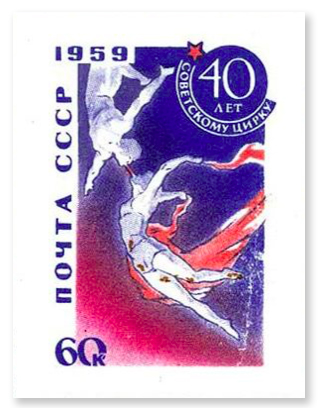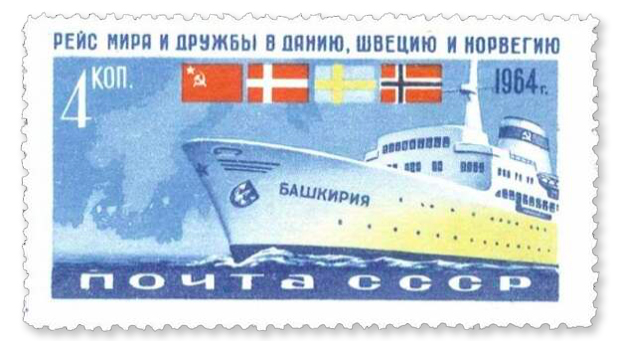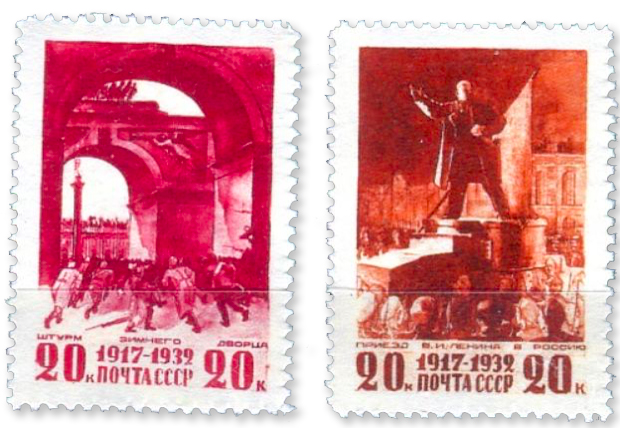The Lost Stamps of the USSR
Views : 5883
Today, due to modern technologies, it’s possible to reproduce the lost stamps in the same colors and sizes. Thus, you can add some interesting items to your collection at an affordable price if you specify on the USSR stamps. No doubt these stamps have a certain historical, educational and artistic value.
So, here’s a list of stamps below that were issued by the Soviet postal service. But because of ideological and other reasons, they were not put into circulation. Stamp collectors call them “stamp projects”. Such projects have a particular interest among the collectors.
Most famous of the lost USSR stamps

Stamp of 1958. Voroshilovgrad diesel locomotive plant.
This is a series of four stamps called "The Firstborns of the Soviet industry". It was prepared for printing in 1958. There was also the stamp “25th anniversary of the Voroshilovgrad locomotive plant named after the October revolution of 1933-1958”. It was prepared for printing by the decree of the Presidium of the Supreme Soviet Ukrainian Socialist Republic dated March 5, 1958. The Voroshilovgrad region and the city of Voroshilovgrad were renamed in the Luhansk region and the city of Luhansk. Therefore the stamp with the old name of the city was eliminated. Currently, the series consists of only three stamps.

Stamp of 1972. People's Artist of the USSR, L. V. Sobinov.
The fact is, Mr. Sobinov was awarded the title of “People's Artist of the Republic” in 1923, and he got the title of “People's Artist of the USSR” later. Stamps with the wrong inscription had to be destroyed, but one package with stamps still went to the airport post office and was sold to the philatelists almost immediately.

Stamps of 1958. VIII Mendeleev Congress.
They started Mendeleev congresses in Russia upon the initiative of the Russian Physical and Chemical society in the memory of D. I. Mendeleev in 1907, the year of the death of this scientist. So, the first Congress took place in 1907, the second one in 1911. The seventh Congress in 1934 had a 25-year hiatus before the eighth one ever took place.

Stamp of 1959. 250 years of the historical Poltava victory in 1709.
On a 40-kopeck stamp, the captured Swedish troops led by their Prime Minister, Karl Piper, and field marshals, stack flags in front of Peter I. This stamp is one of the rarest of all the unreleased stamps, because, as they say, only about 30-40 copies were preserved.

Stamp of 1959. 40th anniversary of the Soviet Circus.

Stamp of 1964. The Voyage of Peace and Friendship to Denmark, Sweden, and Norway by Steamer.

Stamp of 1962. Azerbaijani poet Sabir.

Stamp of 1965. International Democratic Women Federation.
This stamp had been printed in large amounts. But the government noticed the error and all the copies were destroyed. Later on, they printed the stamp with the correct organization name. Evidently, some of the stamps with an error had been received by the Philately Department of the Moscow Bookhouse and they were sold to the philatelists.

Stamp of 1965. 20 years of the Reunification with Transcarpathian Ukraine
On the 20th anniversary of the Transcarpathian Ukraine and Soviet Ukraine reunification, the Soviet government decided to issue a commemorative stamp that would be circulating within the whole territory of the Soviet Union. The stamp was issued in a limited edition. And at one auction, a copy of this stamp was sold for almost $30,000.

Stamp of the USSR 1991 “Happy October day” (unreleased).
Before the collapse of the Soviet Union in 1991, they planned to issue the stamp "Happy October Revolution Day". But for political reasons, the stamp had not been issued.
Here are some other stamps lost in circulation in the USSR.

USSR stamp 1932. 15th anniversary of the Great October Revolution.

USSR stamp of 1962. Lenin with a bow.

USSR stamp of 1961. Lenin, not issued in circulation.

USSR stamp of 1925. Mausoleum, unreleased.

USSR stamp of 1969. Soviet Hockey players, world Champions.

USSR stamp of 1925. Popov, the inventor of radio, 20 kopecks. Unapproved for the release.
The stamps listed below were not issued due to the disapproved design.

Stamp of 1930. USSR Savings bank.

USSR stamp of 1962. II international Tchaikovsky Music Competition.
Today, there are some modern reprints of these lost stamps. But most of the real stamps had been destroyed. The unreleased stamps can be a real “pride” for the collectors, as such stamps help to immerse into the unknown pages of the Soviet Union history, having educational and artistic value.